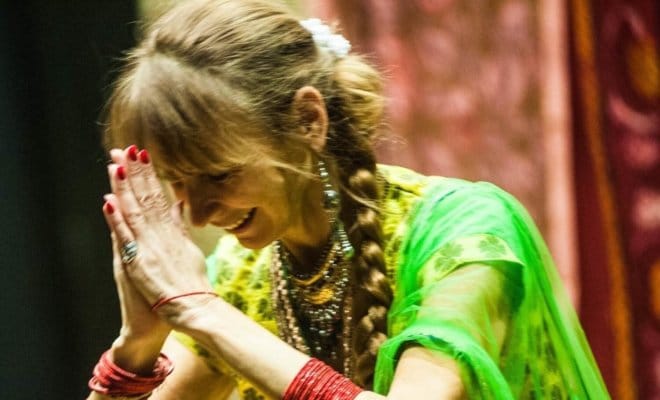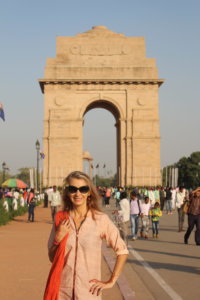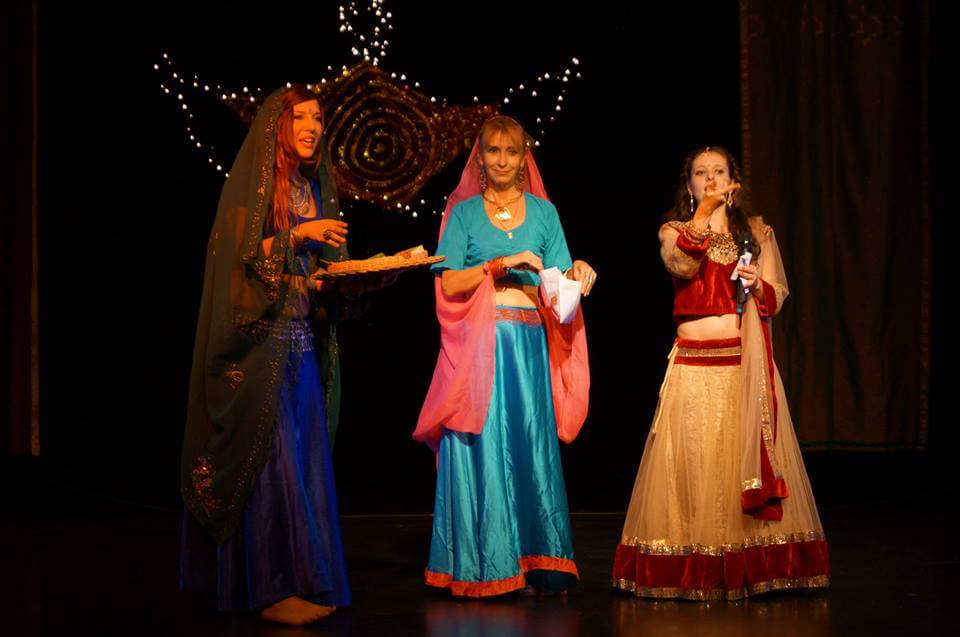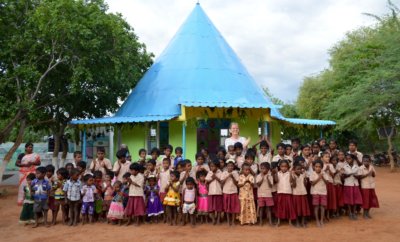Expat Voices
Expat Voice: Seeking Answers

France Azéma
French anthropologist France Azéma completely cut off with her Western way of life and thinking to understand the lives of people, especially women, in India.
France Azéma traveled to India every year since 1982 for research before moving base to Delhi around two years ago.
Azéma, an anthropologist in Indian studies and a sociologist specializing in gender and religion, was fascinated by the country since childhood, which is why she decided to pursue research on the status of Indian women in Hinduism.
“I first visited India with a friend of mine when I was 18 years old. We traveled to Jaipur, Agra and a few other cities. Around 20 years ago, I lived in Vasant Vihar in Delhi for a while,” Azéma, who hails from France, tells Little India.
She talks about her love for Kathak, visit to the Golden Temple and more:
Focusing on Women in Hinduism
I studied in a Catholic institution and, therefore, dealt with spiritual approaches from an early age. It allowed me to ask fundamental questions, the answers of which were not satisfactory. So I decided to find them myself. A treaty about Vedanta opened me up to the depths of an extremely interesting world that I could understand and relate to.
Combining my commitment to the “feminine cause” and my love for India, I took up Indian anthropology with a special focus on gender roles. The theme of my research is the position of women in Hinduism and the importance of female symbolisms. I study the religious practices of women. I am interested in the “feminine power” and wish to know how women appropriate this power in their religious practices, homes and society.
The Hindu religion gives women a relatively unique place. They have within them a goddess. The woman brings the goddess into her home and provides protection. What is interesting to study is the dichotomy between domestic and social status of women.
What is striking about India is the invariance regarding gender differences in society. Gender plays a central role in the construction and maintenance of group-based inequalities. At all levels of society, all relationships are hierarchical. Men dominate women, high castes prevail over the lowest, women also penalize women.
Delhi – Then and Now

France Azéma
When I first came to India, I couldn’t draw any comparison between the culture and lifestyle here and the West. There was no point of reference in terms of architecture, food, clothing, behavior, customs, etc. Now, it’s a lot less shocking, at least in the big cities.
At that time, there was no Coca-Cola or McDonald’s or Domino’s pizza. There were no ATMs or supermarkets. Pizzas were only found at the coffee shop in the Taj Mahal hotel, ice creams were found only at Nirula’s. There was a lot less traffic on the streets. We could do much more in a day. Now, the traffic is unbelievable. The way people drive looks straight out of a Bollywood film. However, the parks are beautiful.
Perhaps, something difficult to accept is the lack of politeness and gallantry, and especially the disdain of some people for women. In the same vein, it is shocking to have Indian rates and “foreign” rates for almost everything. The difference ranges from twice to 10 times the amount.
Love for Kathak
I am a dancer, and take Kathak lessons here. I learnt the dance form during my stay in Varanasi. However, I have never performed as a Kathak dancer. I have performed Bollywood dance though.

France Azéma (center)
I have also been a yoga teacher for almost 40 years. I practice Nritya Yoga, which is an amalgamation of Indian dance forms and yoga – something I stumbled upon during my research.
Visit to the Golden Temple
I traveled to Punjab a lot and lived with the local families in villages as part of my research. One day, my friend made a last-minute plan to visit the Golden Temple in Amritsar. A few of our neighbors also joined us.
We went to the railway station, waited for hours for the train to arrive and finally reached Amritsar at around 2 am. My friends decided to go straight to the Golden Temple. It was late November, and the nights were cold.
 At the temple, we are asked to take our shoes off, leaving me with no choice but to walk barefoot on the ice-cold marble floor. We then ate our meals and began looking for a place to sleep. The common room was crowded, so my friend suggested that we sleep outside under the arcades on the wet marble with just a sheet laid on the ground to prevent us from the cold!
At the temple, we are asked to take our shoes off, leaving me with no choice but to walk barefoot on the ice-cold marble floor. We then ate our meals and began looking for a place to sleep. The common room was crowded, so my friend suggested that we sleep outside under the arcades on the wet marble with just a sheet laid on the ground to prevent us from the cold!
In the morning, we joined a two-hour long queue to give our offerings. It was so crowded that we could not see the sacred book. Then, something beautiful happened.
The sun rose and the Golden Temple shone bright under the first rays of sunlight. A marvelous vision!
I left the city sitting on the iron bars (normally meant to keep a passenger’s luggage) located above the seats for three hours in a train overflowing with people. However, visiting the Golden Temple was an extraordinary experience.
Learning Lessons
I have learnt to be more patient and accepting after having lived here for so long – “sab kuch milega.” I have also learnt to get used to the lack of privacy.
I had to completely cut off with my Western way of life and thinking to observe and understand the lives of people here. During my research, I lived with Indian families in towns and villages for several months.

France Azéma
I received the greatest lessons of life while working with women, who lived in a slum in North Delhi. I saw a demonstration of their strength and determination. I realized how strong and active they are, far from being a “submissive” or a “victim.” I met women who commit, women who create, women who lead the way.
The interview has been condensed and edited.
Expat Voice is regular column on expats in India. Email us at expat@littleindia.com to nominate yourself or another expat for the column.


